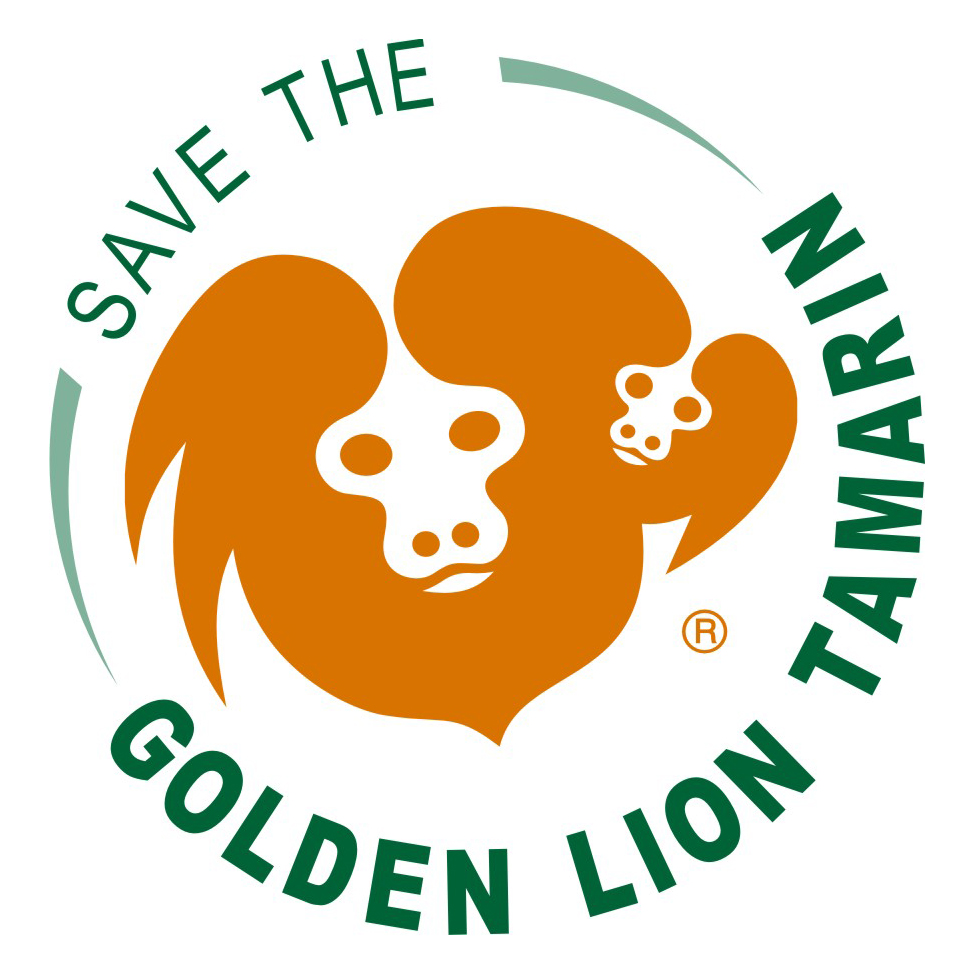A Look Back: Pioneers of Golden Lion Tamarin Conservation
Distinguished international environmental consultant Dr. Ken Green reminisces about his pioneering 1980 assessment of the then-newly created Poço das Antas Biological Reserve, and the first systematic survey of its wild golden lion tamarins. Dr Green estimated that there were only 75 to 150 golden lion tamarins living in the reserve at that time. He revisited the reserve in 2023, and helped to celebrate the 50th anniversary of the Reserve’s creation by presenting a copy of his original 1980 PhD thesis to the library of Associação Mico-Leão-Dourado (Brazil’s Golden Lion Tamarin Association).
Dr. Ken Green (left) presents a copy of his 1980 PhD thesis on golden lion tamarins to Associação Mico-Leão-Dourado Executive Secretary Luiz Paulo Ferraz for the official golden lion tamarin library. September 2023.
Ken writes:
The 50th anniversary prompts us to recall several people who were instrumental in the early days of golden lion tamarin conservation and who influenced my life as a young graduate student. My 2023 trip to visit the Poço das Antas Reserve marked a 50-year circle regarding my involvement with golden lion tamarin research as a pre-doctoral fellow at the Smithsonian’s National Zoo in the 1970s. I went to Brazil in 1980 to conduct the first concentrated survey of golden lion tamarins in Poço das Antas.
Most of the readers of this note will be familiar with both Dr. Devra Kleiman and Dr. Adelmar Coimbra-Filho, founders and inspirational leaders of the original Golden Lion Tamarin Conservation Program. But I’d also like to acknowledge Dr. John Eisenberg, Dr. Bob Hoage, and Gene Maliniak, all Natonal Zoo staff members who played critical roles in the work.
Dr. Devra Kleiman, leader of the Smithsonian National Zoo’s golden lion tamarin conservation and research field programs in Brazil and the international zoo propagation program.
Devra of course led the breeding and conservation efforts globally for the golden lion tamarins. She served as the Zoo’s Deputy Director, exerting strong leadership and always pushing to advance a conservation mission. All can recall her infectious energy and raucous laugh.
Dr. Adelmar Coimbra-Filho, founding Director of the Rio de Janeiro Primate Center and legendary advocate for research and conservation of wild golden lion tamarins and other Brazilian primates.
I first met Coimbra-Filho in the early 1970s at one of the landmark Smithsonian conferences on New World monkeys in Washington, D.C.. He was a gracious and supportive man, but relentless in his pioneering efforts to sensitize the world to severe threats to Brazilan primates. He was the Director of the Rio de Janeiro Primate Center, which I visited several times during my early days in Brazil.
Dr. John Eisenberg, renowned mammologist and former Head of the Smithsonian National Zoo’s Department of Zoological Research.
John Eisenberg was an acclaimed mammologist and the founding Director of the National Zoo’s Department of Zoological Research. He had the foresight to establish a research colony of golden lion tamarins long before they became conservation icons. He also hired Dr. Kleiman to lead the fledgling research and breeding program for the species. John and Devra were married soon thereafter. John was my academic advisor in the 1970s, and was well known for his intellect, genius, photographic memory, and encyclopedic knowledge of mammals.
Gene Maliniak was the lead animal keeper of the Department of Zoological Research’s animal colony for three decades. He had the proverbial “green thumb” with animals and implemented staff scientists’ ideas to improve the social wellbeing and nutrition of the golden lion tamarins and other small mammals and birds. He was a precursor of the environmental enrichment movement for zoo animals, setting up inventive cage features to stimulate curiosity, movement, feeding, cohesive social groups, and reproduction.
Bob Hoage was a fellow graduate student and good friend in the 1970s at the National Zoo, also conducting golden lion tamarin research. After he finished his doctorate, he went on to become the Zoo’s Director of Public Affairs for more than 25 years.
These colleagues, all of whom have now passed, significantly influenced my early days in primatology. But I am also inspired by the dozens of people now involved with Associação Mico Leão Dourado’s highly successful global program to ensure that this beautiful monkey continues to thrive in the Atlantic Coastal Forest. Finally, I celebrate the decades of dedication and leadership by Lou Ann and Jim Dietz (President and Vice President respectively of Save the Golden Lion Tamarin), who I am proud to say are fellow former Peace Corps volunteers. Our Peace Corp experiences provided our early introduction to the neotropics and fostered our lifetime commitment to international development and conservation.




